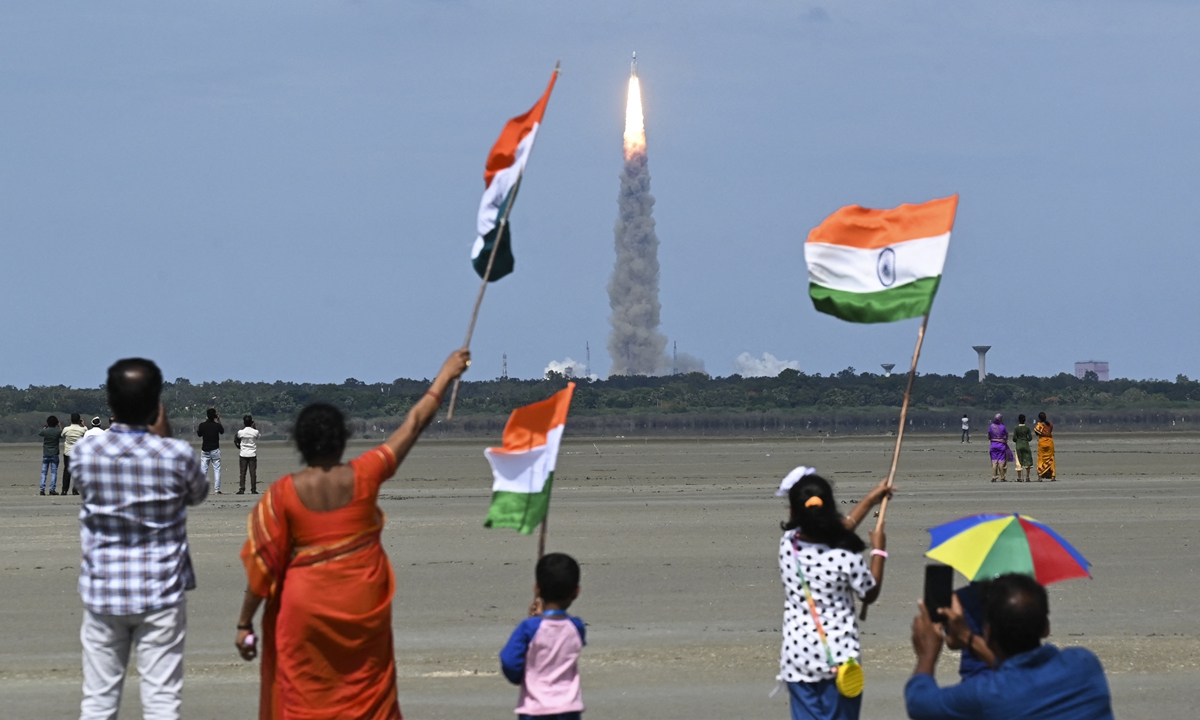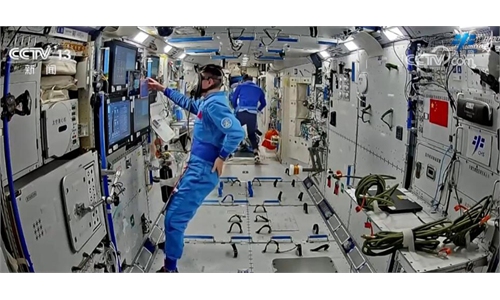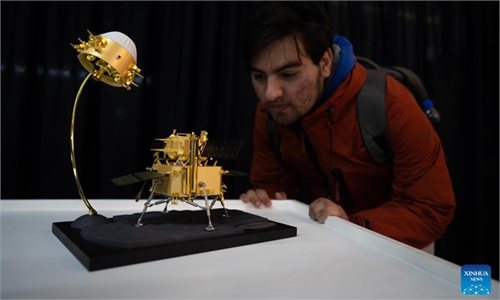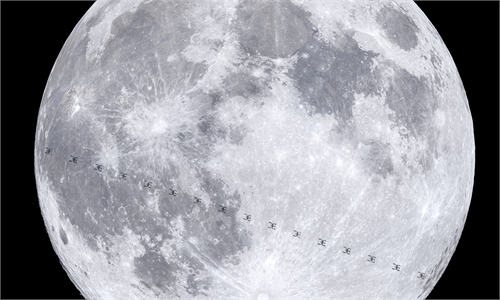
People wave Indian flags as an Indian Space Research Organisation (ISRO) rocket carrying the Chandrayaan-3 spacecraft lifts off from the Satish Dhawan Space Centre in Sriharikota, an island off the coast of southern Andhra Pradesh state on July 14, 2023. Photo: AFP
India is poised to celebrate its inaugural National Space Day on Friday, commemorating the one-year anniversary of the Chandrayaan-3 mission, which achieved the historic feat of landing a robotic probe on the lunar south pole—a first for humanity.
While India may have entered the space race later than some, the nation has rapidly strengthened its capabilities in space exploration, closing the gap with established space powers. On this significant day, New Delhi has much to celebrate, from past accomplishments to an ambitious future agenda that includes plans for manned spaceflight—a milestone achieved by only a select few countries worldwide.
According to the local media, the first Indian national space day is themed "Touching Lives while Touching the Moon: India's Space Saga," and the Indian Space Research Organisation (ISRO) has organized events, exhibitions and educational activities across the country aiming to showcase the country's growing capabilities in space science and technology, and after all, inspire and engage younger generations in the field.
The Chandrayaan-3 spacecraft managed the first ever soft landing near the south pole of the moon in 2023, marking a triumph for the ISRO, according to the London-based New Scientist magazine.
Over the past few decades, India has made remarkable strides in space exploration, including advancements in satellites, launch vehicles, and space missions. The country's space program is distinguished by its application-oriented approach, focusing on the development of application satellites and satellite technologies. Building on this foundation, India has established a comprehensive space organization and system, Pang Zhihao, a senior space expert, told the Global Times on Thursday.
The development of India's space program unfolds in three key phases: first, by leveraging foreign financial and technological resources to build a foundational national space system; second, focusing on the advancement of communication and remote sensing satellites, along with launch vehicles; and third, by innovating new space vehicles and broadening the scope of space applications, according to the expert.
This approach has proven to be effective, showcasing advantages such as diversity, speed, quality, and cost-efficiency, Pang said.
However, India's space activities seem to be limited by its economic input and technological resources, he said.
Besides honoring the remarkable feat of Chandrayaan-3 spacecraft robotic lunar mission, India also revealed its ambitious manned spaceflight missions ahead of the celebration of national space day, with ISRO senior official announcing that the first test flight of its human space mission "Gaganyaan" is expected to take place in December this year, the NDTV reported.
According to the ISRO chairman S Somanath, all the systems for the Gaganyaan rocket code named G1 will reach Satish Dhawan Space Centre in November this year and the target for the rocket flight is December, the report said.
The ISRO chief also revealed to the Indian media that lunar missions will be ISRO's focus for the next few years. "Chandrayaan-3 was successfully completed, and we are now working on Chandrayaan-4 and Chandrayaan-5. The designs for these have been completed, and we are seeking approval from the government," he said.
By April next year, an Indian astronaut is expected to fly to the ISS as part of a collaborative mission between NASA and ISRO. Indian Science and Technology Minister Jitendra Singh shared this news during a press conference, Business Today reported on Thursday.
New Delhi also aims to send first crewed space mission by mid-2025, the Print reported on August 20, citing the space agency's head Somanath.
India aspires to become the fourth country, after Russia, the US, and China, to independently complete a crewed space mission, and such ambition underscores the significant achievements of India's space industry. As such, India's space program remains a noteworthy area of interest and study, Chinese space observers said.
Over the past few decades, India has made remarkable strides in space exploration, including advancements in satellites, launch vehicles, and space missions. The country's space program is distinguished by its application-oriented approach, focusing on the development of application satellites and satellite technologies.
Experts suggested that to become a major space power, India should consider addressing challenges such as enhancing its rocket payload capacity, increasing investment in space programs, and reducing reliance on foreign technology and resources.




